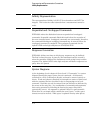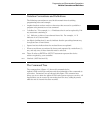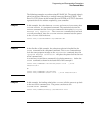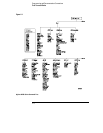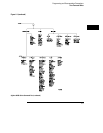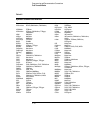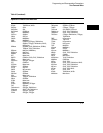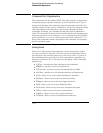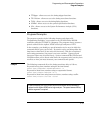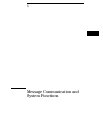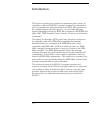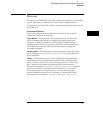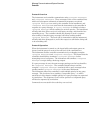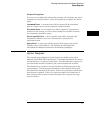
Command Set Organization
The command set for the Agilent 1670G-series logic analyzers is divided into
19 separate groups: common commands, system commands, and 17 sets of
subsystem commands. Each of the 19 groups of commands is described in a
separate chapter in Parts 2 and 3, "Commands." Each of the chapters contain
a brief description of the subsystem, a set of syntax diagrams for those
commands, and finally, the commands for that subsystem in alphabetical
order. The commands are shown in the long form and short form using upper
and lowercase letters. As an example AUToload indicates that the long form
of the command is AUTOLOAD and the short form of the command is AUT.
Each of the commands contain a description of the command, its arguments,
and the command syntax.
Subsystems
There are 17 subsystems in this instrument. In the command tree (figure
4-1) they are shown as branches, with the node above showing the name of
the subsystem. Only one subsystem may be selected at a time. At power on,
the command parser is set to the root of the command tree; therefore, no
subsystem is selected. The 17 subsystems in the Agilent 1670G-series logic
analyzers are:
•
SYSTem - controls some basic functions of the instrument.
•
MMEMory - provides access to the disk drives.
•
INTermodule - provides access to the Intermodule bus (IMB).
•
MACHine - provides access to analyzer functions and subsystems.
•
WLISt - allows access to the mixed (timing/state) functions.
•
SFORmat - allows access to the state format functions.
•
STRigger - allows access to the state trigger functions.
•
SLISt - allows access to the state listing functions.
•
SWAVeform - allows access to the state waveforms functions.
•
SCHart - allows access to the state chart functions.
•
COMPare - allows access to the compare functions.
•
TFORmat - allows access to the timing format functions.
Programming and Documentation Conventions
Command Set Organization
4–12



